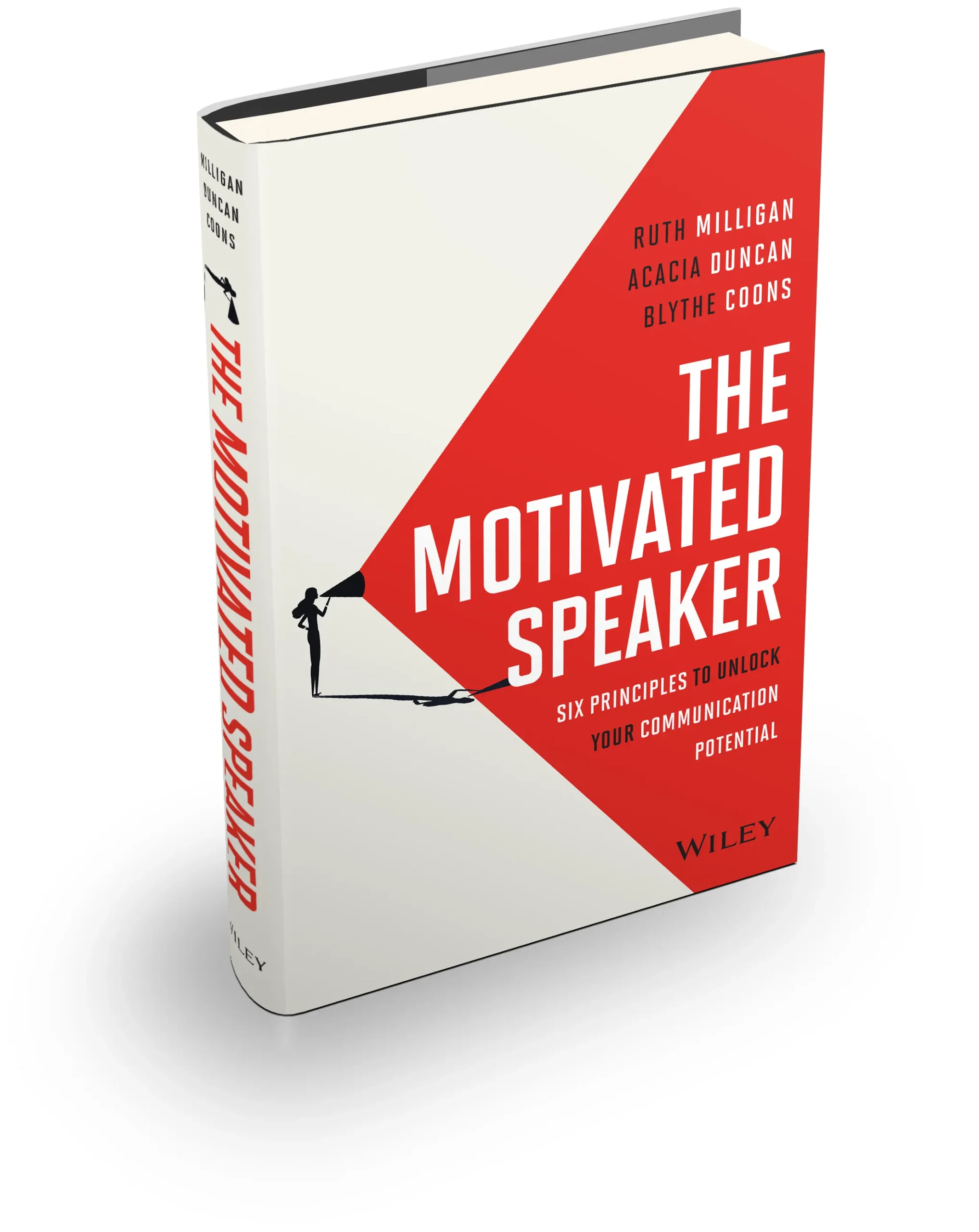In the last few years, I’ve found myself at the interesting intersection of supporting a leader who needs to evolve into an influential speakers, and the corporate communications team that has responsibility for speech writing and feeding that same executive messaging to deliver.
I shared a tip on this in this video recently, but I had a new example to share on one very specific point.
Here is a common situation: An executive has had to deliver insights their entire career on their own – financial updates, legal status, corporate strategy – and all of the sudden – they are promoted. And with the promotion comes the responsibility of delivering the corporate message. Which they don’t create alone, and sometimes, don’t create at all. That’s the job of the corporate comms team.
The messages may be crystal clear to the comms team. And even to the executive.
But the way in which the executive thinks, processes, speaks and delivers the message is not so straightforward.
Case in point: An executive recently shared they didn’t feel comfortable – at all – in reading talking points. The way they process language didn’t allow them to read out loud what was on the paper.
Moreover, their corporate comms team was used to writing for another executive who didn’t read what they wrote either – but could quickly extrapolate the key messages and make them their own.
Lastly, the writers on the team were not custom to speech writing, per se, working on cadence and sentence structure that comes naturally to the spoken word. Their words were beautiful but not necessarily deliverable.
In working with a team recently, I came across this 52 word sentence in a proposed script. I have stripped out the identifying information (which has been replaced with the words in bold). The event was recognizing a gift of a corporation to a non-profit.
Just as Acme continues to transform their industry by providing unmatched value for customers through more than a million stores in almost every state of the nation, they are helping transform this social cause and change the minds of corporate America about what it means to lead in their community on the issues that really matter.
Let’s break down a few realities about how we speak:
- We speak in 10-14 word sentences before we need to breathe
- Our audiences like us to pause or breathe after a complete thought or slightly longer sentence (14-16 words)
While the realities of how we write:
- We write in much longer word (not always 52 words – but close!) sentences
- We often combine multiple thoughts in a sentence
- There is little thought to breath when writing unless you are a trained speechwriter.
After many iterations of the sentence above, this is the final product the executive was comfortable with:
Make no doubt,
as they set to
transform their industry
across the country,
they are also transforming minds
about what – it – means – to – be
a leader in THIS social cause.
The first phrase has 14 words, the second one has 16. Total of 30 words, down from 52. Same meaning with a shorter and punchier delivery.
We’ve added some emphasis markers (the hyphens and caps) so when it is delivered, there is some intentionality about those words that separates them from the rest.
And while I do not like TelePrompTers, the hard returns in the middle of sentences allow the speaker – who will need to reply on these notes to deliver this address – to scan the words vertically, not horizontally.
So to finish where we started and a quick tip for the corporate comms folks who are not adept to writing for the spoken word. Starting with long sentences and key messages is great ‘staging’ for the final product, but until you have an executive speak it out, don’t expect them to process or deliver sentences over 14 words very well.
Our executive preparing this talk saw his anxieties melt away when he saw the ‘vertical’ version of the words – a far better match for the way his brain and processes language and the verbal delivery of it.
Ruth Milligan is the Founder, Managing Director and an Executive Coach and Trainer with Articulation. She is perhaps best known as one of the original curators for any TEDx event (the license program for TED). Since 2009, Ruth has selected and coached over 200 speakers who have taken the TEDxColumbus stage. She is often tapped as an expert in the TED-style of speaking and has authored a class on how to be a TEDx speaker coach. Connect with Ruth.


